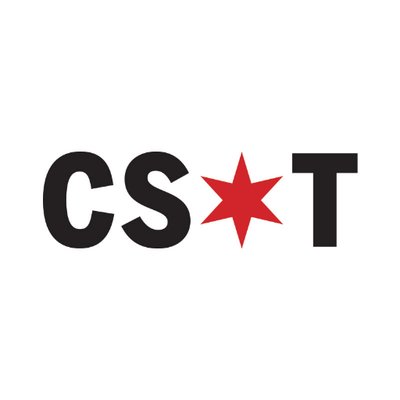



Forty years ago, on Jan. 22, 1984, British actress Anya Major suddenly appeared before 77 million television viewers and heaved a rotating sledgehammer toward the Super Bowl XVIII audience and into history. With that, Apple Computer’s unique new Macintosh ad made an explosive national debut.
During that same game, an understated “Where’s the beef?” spot for Wendy’s captured the hearts of viewers.
The two ads could not have been more different, but together they helped transform the Super Bowl into a secular American holiday. Both ads, as it happened, featured women asserting themselves, one an athletic young actress, the other a charming 82-year-old curmudgeon, Clara Peller.
The Wendy’s ad was created by Chicago advertising guru Joe Sedelmaier, who built a reputation for oddball spots that featured quirky people like the Federal Express fast-talker guy. The Wendy’s ad was a hit, “Where’s the beef” became a national punchline, and Peller won a best actress Clio Award, the gold standard in advertising.
The Super Bowl game continued to gain traction and spawned massive parties in homes and bars. Last year’s 2023 broadcast reached more than 115 million viewers. About one-third of the audience is now women, partly because Super Bowl Sunday is a family entertainment event featuring extravagant halftimes and a host of eagerly anticipated ads inspired by the 1984 broadcast when the new Macintosh commercial appeared just after halftime.
Jaws dropped, and even the national TV announcers, John Madden and Pat Summerall, took note. In the ad, mindless suits march in lockstep through a dystopian world, while a squad of “thought police” chases the defiant hammer-wielding young woman as she races toward the camera. When she lets the sledgehammer fly, it smashes an imposing projected image of a “Big Brother” despot with fallout spreading like white nuclear dust. A serious voiceover announces the arrival of the Apple Macintosh, unabashedly evoking George Orwell’s cynical literary work “1984.”
The Peller ad took a different approach. It was demure, funny and engaging. It featured a puzzled senior citizen who couldn’t find the beef inside a sandwich from the fictional “Home of the Big Bun,” no doubt a stand-in for actual rivals McDonald’s and Burger King. It was a hit and became a national campaign.
A new standard for Super Bowl commercials
By contrast, the breathtaking “1984” Apple ad was shown on national television just that one time and never appeared again, adding to its mystique. Advertising Age magazine would call the Apple spot the greatest of all commercials. In 1995 the Clio Awards added it to their advertising Hall of Fame, and in 1999 TV Guide also named it the greatest commercial of all time.
Ad firm Chiat/Day conceived the Macintosh spot, which was directed by the acclaimed Ridley Scott, who had already done two classic feature films, “Blade Runner” and “Alien.” Apple’s board, however, rejected the bizarre, disruptive ad. A planned second Super Bowl slot for it was canceled, but the company was stuck with one 60-second commitment, not to mention the $500,000 it spent producing the ad. Apple’s assertive founder Steve Jobs supported the commercial, so they nervously let it run.
After 1984, advertisers chased Super Bowl magic with memorable ads like the “Pepsi” spot starring Cindy Crawford (1992); Nike’s “Hare Jordan” (1993); the “Budweiser Frogs” (1995); the Career Builder “Monkeys” (2006); E*Trade’s “Talking Babies” (2008); and Betty White’s “Snickers” (2010). Last year’s Super Bowl ads featured many celebrities, including Martha Stewart, Snoop Dogg, Amy Schumer, Melissa McCarthy and Bradley Cooper, plus several nods to hit movies and shows like “Grease,” “Clueless,” and “Breaking Bad.”
The 2023 Super Bowl slots sold for an average of $7 million for 30 seconds. With a blockbuster game, spectacular halftimes and alluring commercials, the Super Bowl has become an American institution, and Super Bowl Sunday is now a virtual holiday.
Its audience grew to 90 million for the 1986 game, which not only featured the bone-jarring and colorful Chicago Bears who set a game record for margin of victory, but also included a commercial that starred two of those Bears pitching Coke: “Refrigerator” William Perry and the “Punky Quarterback” Jim McMahon. That same broadcast also featured the Budweiser Clydesdales, who then became a Super Bowl tradition.
Today’s massive audience looks forward to the game, parties and more, including the halftime show and a parade of entertaining ads, many of them making their television debuts during the big game. And all of it is now called Super Bowl Sunday.
Eldon Ham is a member of the faculty at IIT/Chicago-Kent College of Law, teaching sports, law and justice. He is the author of five books on the role of sports history in America.
The Sun-Times welcomes letters to the editor and op-eds. See our guidelines.
The views and opinions expressed by contributors are their own and do not necessarily reflect those of the Chicago Sun-Times or any of its affiliates.
